Embark on a journey through time and enlightenment as we explore the Temple of Literature, a testament to Vietnam’s rich cultural and educational roots. Located in the heart of Hanoi, this architectural marvel has stood for over seven centuries, captivating visitors with its serene beauty, historical significance, and profound reverence for knowledge. Prepare to be amazed as we uncover the secrets of this extraordinary monument.
Hanoi Temple of Literature in Vietnam
1. Temple of Literature Vietnam History
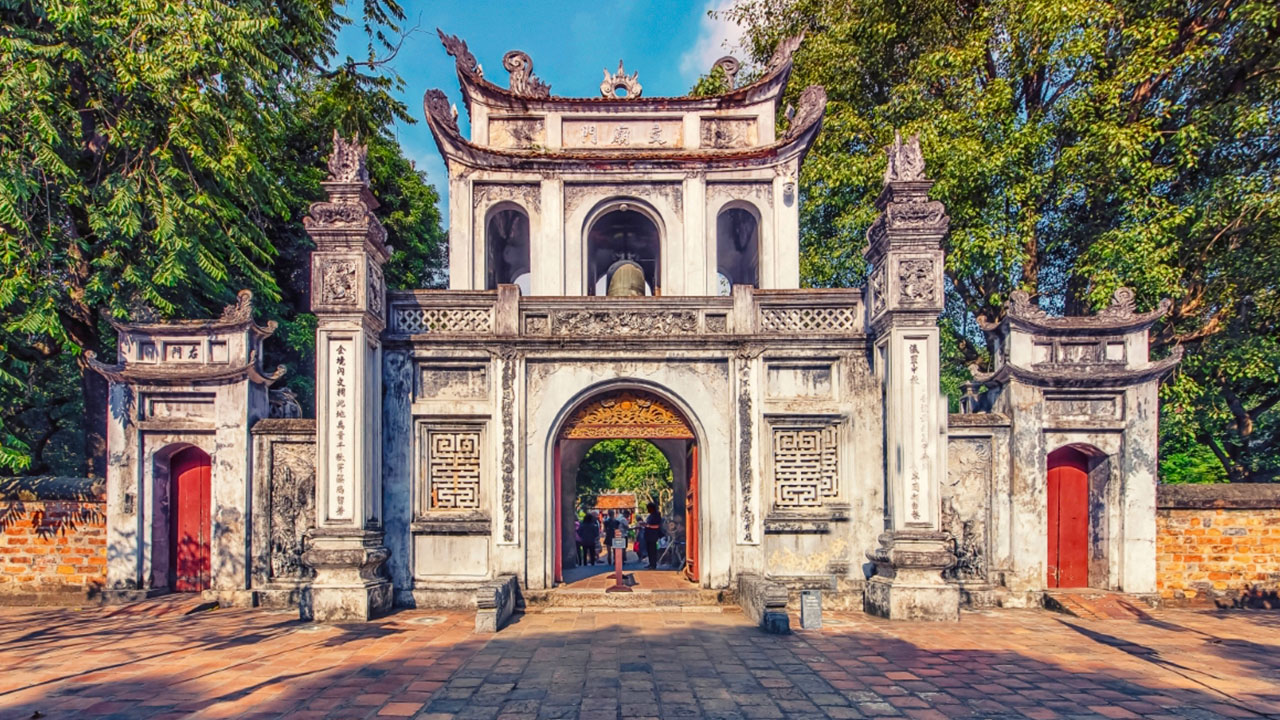
Founding and Purpose: Founded in 1070 by Emperor Ly Thanh Tong, the Temple of Literature was initially dedicated to Confucius, the ancient Chinese philosopher. Later, it became Vietnam’s first university, known as the Imperial Academy, nurturing generations of scholars and intellectuals.
Surviving Trials: Withstanding wars and natural disasters, the temple has endured over 900 years, symbolizing the resilience of Vietnam’s cultural heritage. Its survival is a testament to the deep respect and reverence held for education and scholarship in Vietnamese culture.
Continual Reverence: Despite the passage of time, the Temple of Literature remains a place of reverence and learning, attracting students, scholars, and tourists alike. Its historical significance and architectural beauty continue to inspire and educate visitors from around the world.
2. Temple of Literature Architecture

Expansive Complex: Covering approximately 54,000 square meters, the Temple of Literature is an expansive complex, surrounded by brick walls and serene gardens. It comprises five distinct courtyards, each with its own unique features and historical significance.
Great Middle Gate: Marking the entrance to the temple, the Great Middle Gate is adorned with a fish figure, symbolizing perseverance and success in academia. The gate sets the tone for the journey through the temple, emphasizing the importance of dedication and hard work in the pursuit of knowledge.
Pavilion of Constellation: A small yet harmonious structure, the Pavilion of Constellation is a symbol of Hanoi and is featured on Vietnam’s 100,000 VND banknote. Its intricate design and delicate beauty reflect the artistry and craftsmanship that went into the temple’s construction.
3. Exploring the Temple of Literature
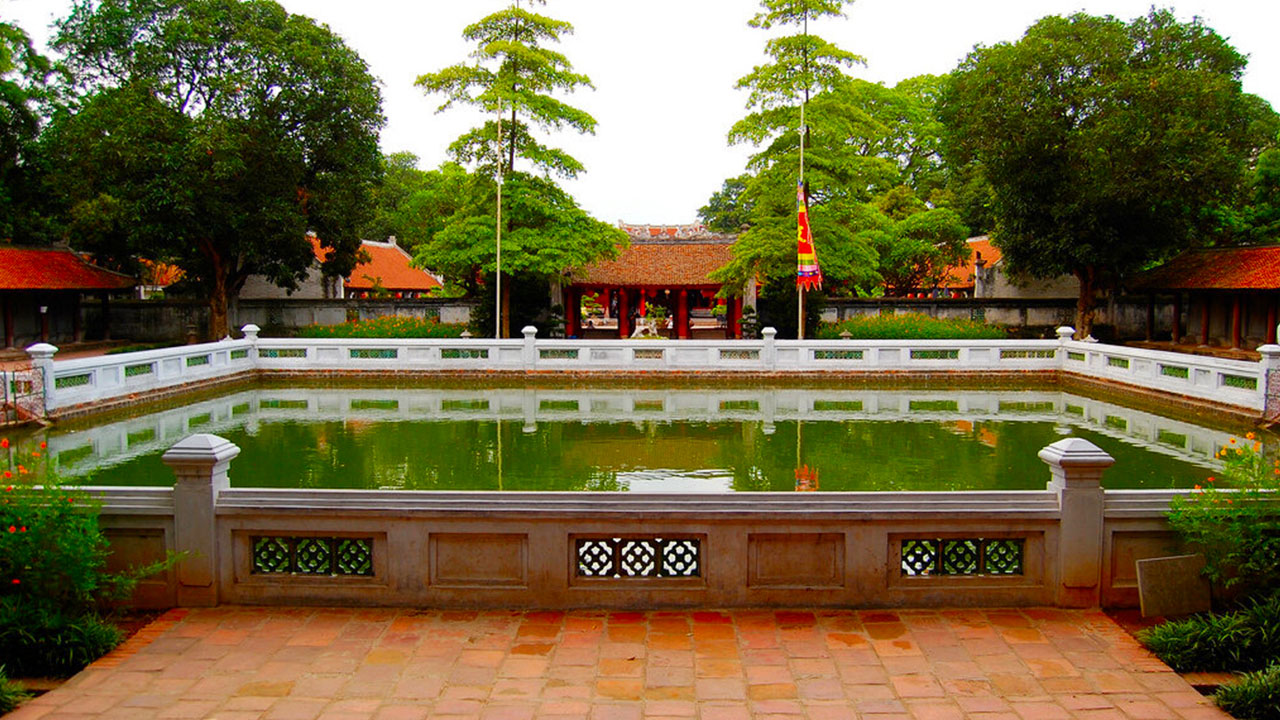
Well of Heavenly Clarity: Located in the third courtyard, the Well of Heavenly Clarity is a square pond surrounded by stone turtles carrying stelae praising Confucianism. These stelae honor kings, scholars, and the values of Confucianism, emphasizing the importance of education and virtue in Vietnamese society.

Gate to Great Success: The fourth courtyard houses the Gate to Great Success, leading to the House of Ceremonies and a sanctuary dedicated to Confucius. The striking red columns and wooden ceilings of these structures create an awe-inspiring atmosphere, befitting the temple’s significance.
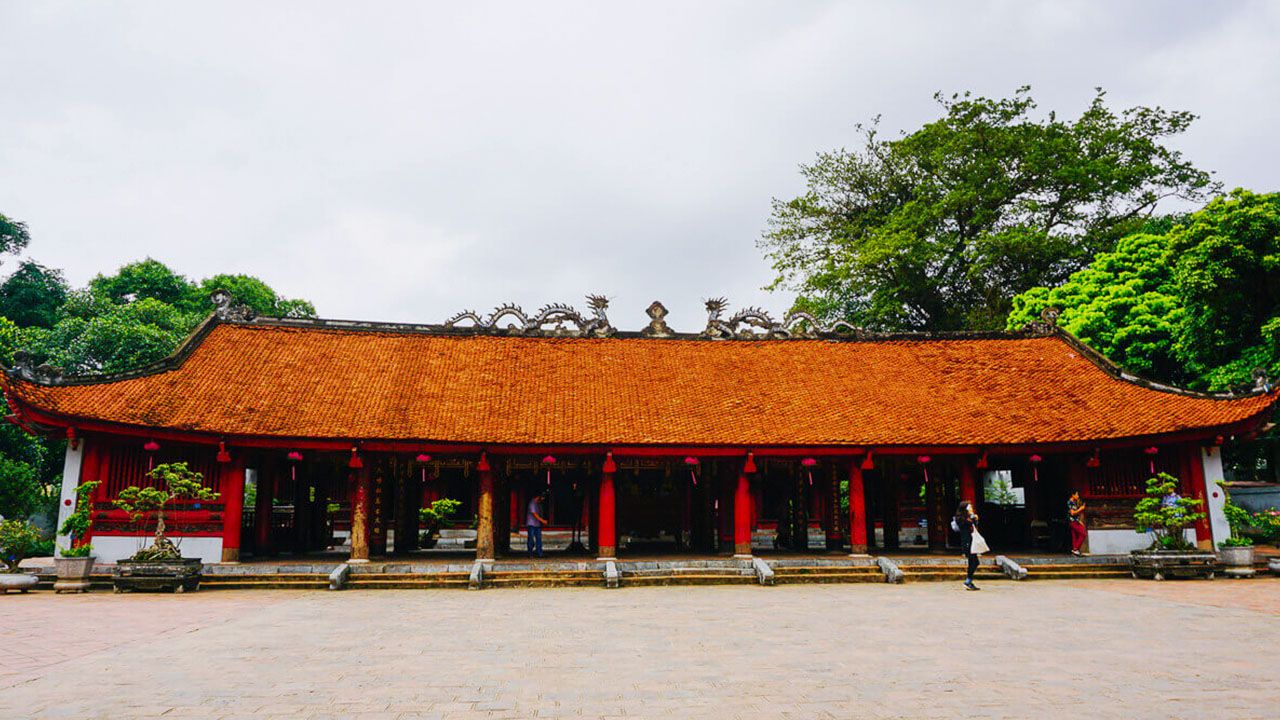
Grounds of Imperial Academy: The fifth courtyard, known as the Grounds of Imperial Academy, features a statue of Chu Van An, the first rector of the Imperial Academy. This area pays homage to the three kings who significantly contributed to the temple and the academy, highlighting their role in fostering education and scholarship.
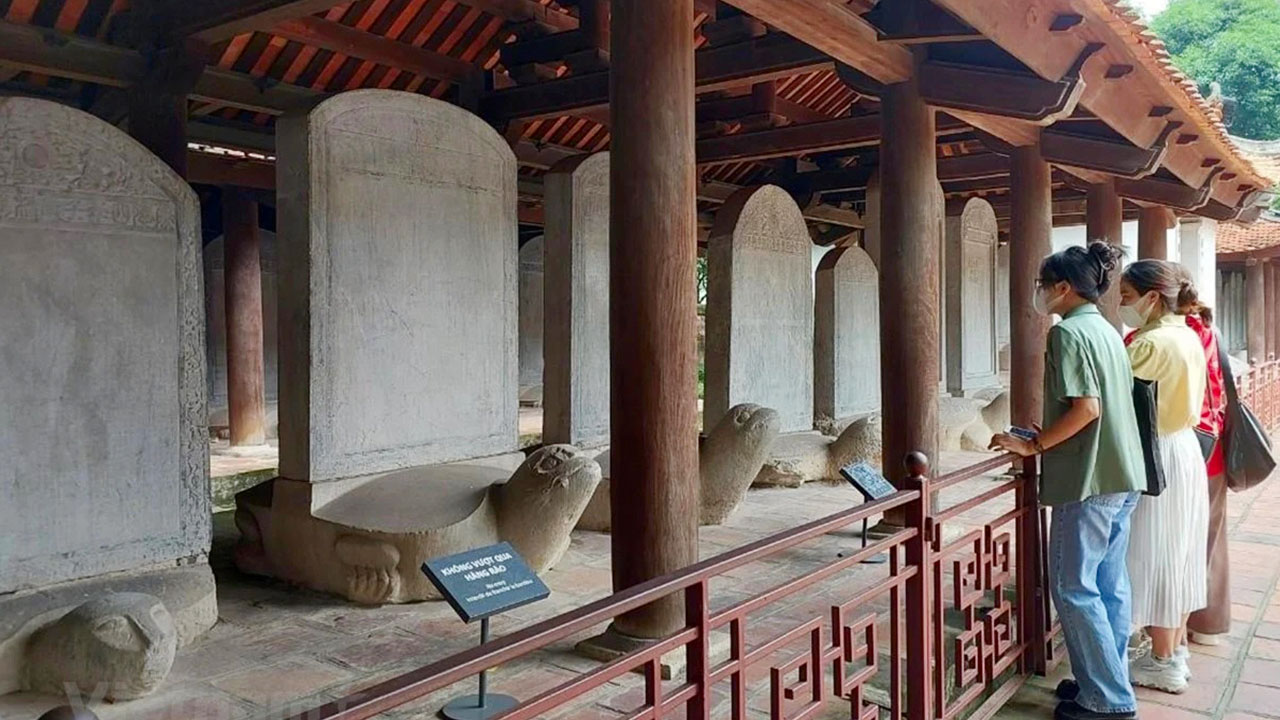
82 Stelae of Doctors: Situated on either side of Thien Quang well are two rows of impressive stone steles, commonly referred to as Doctor steles. These 82 steles, each placed on the back of a green stone turtle, are intricately carved in various styles and hold significant spiritual value. They serve as a tribute to the 82 top scholars who achieved the highest honors in the ancient Vietnamese feudal dynasty’s examinations.
4. Temple of Literature Experience
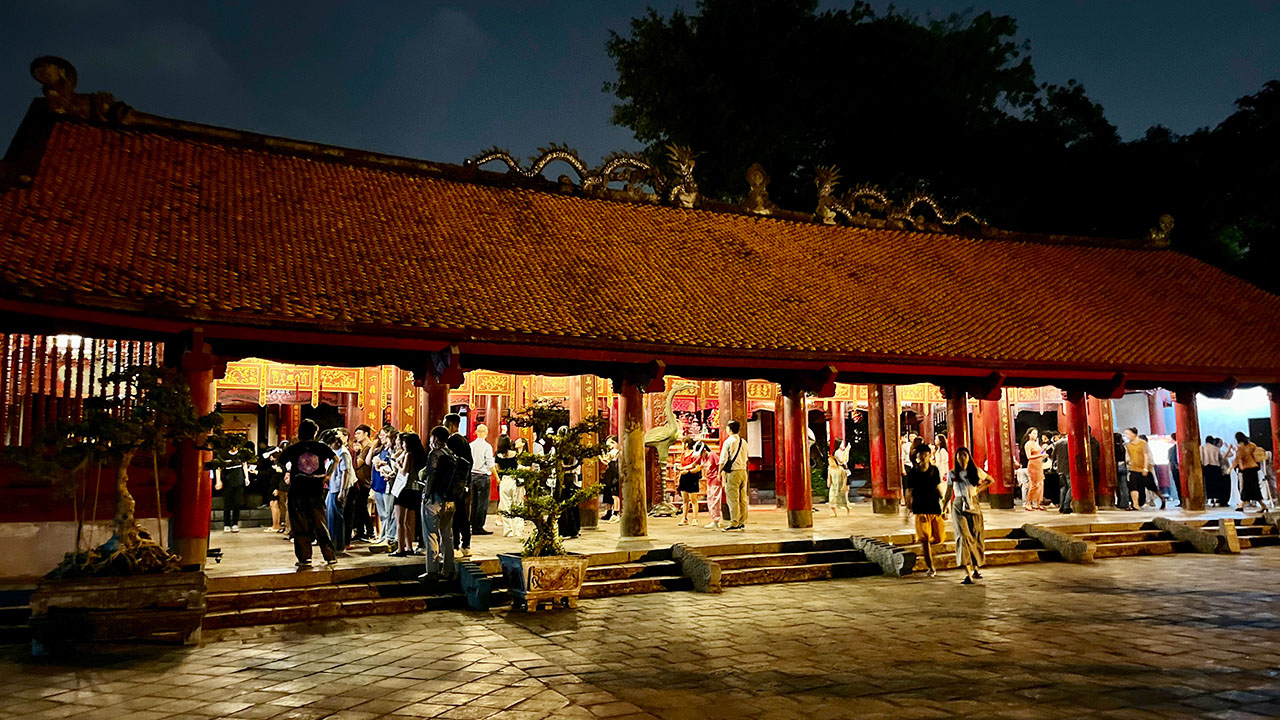
Immersive Journey: A visit to the Temple of Literature offers an immersive journey through Vietnam’s history, culture, and educational traditions. Visitors can explore the courtyards, admire the architecture, and learn about the significance of Confucianism in shaping Vietnamese society.
Tranquility and Reflection: The temple’s serene atmosphere provides a space for contemplation and reflection. Visitors can wander through the gardens, soak in the beauty of the surroundings, and find solace in the temple’s tranquil ambiance.
Educational Insights: The Temple of Literature offers valuable insights into Vietnam’s educational history and the importance placed on scholarship and intellectual pursuits. Visitors can learn about the Imperial Academy, the scholars who studied there, and the contributions they made to Vietnamese society.
5. Temple of Literature Surroundings
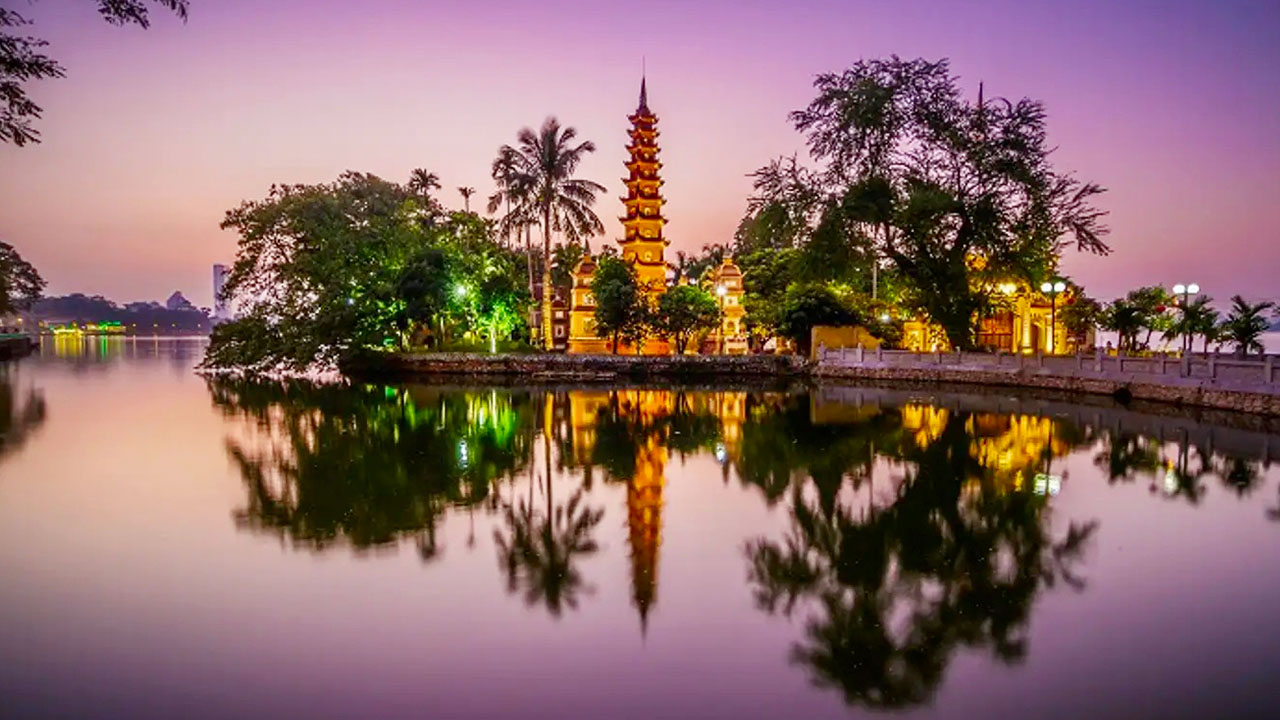
Quang Trung Temple: Located near the Temple of Literature, the Quang Trung Temple is dedicated to Emperor Quang Trung, a legendary military leader. Visitors can explore this temple to gain insights into Vietnam’s military history and pay tribute to a revered national hero.
Ho Chi Minh Mausoleum: A short distance from the Temple of Literature, the Ho Chi Minh Mausoleum is the final resting place of Ho Chi Minh, the beloved leader of Vietnam. Visitors can pay their respects to this iconic figure and learn about his role in shaping Vietnam’s modern history.
Ho Chi Minh Museum contains numerous documents and artifacts regarding President Ho Chi Minh as well as his cultural and revolutionary legacy. A visit to the museum illustrates the tremendous sacrifices he made for the Vietnamese people. Enhance your Hanoi experience with a pilgrimage to the Ho Chi Minh Museum.
Hanoi Old Quarter, famed for its abundance of captivating attractions, tantalizing culinary offerings, lively nightlife, and distinct handicrafts, is a downtown area embodying the city’s historical ups and downs. This makes it a compelling spot for travelers seeking to delve into Hanoi’s cultural heritage and engage in leisurely strolls to discover its iconic landmarks.
Hanoi Opera House: Another nearby attraction is the Hanoi Opera House, a stunning architectural masterpiece inspired by the Paris Opera House. Visitors can admire its elaborate facade, attend performances, and experience the vibrant cultural scene of Hanoi.
FAQs
1. Temple of Literature Opening Hours and Ticket Prices
- Opening Hours: The Temple of Literature is open daily from 8 am to 5 pm.
- Ticket Prices: Adults: 70,000 VND | Students: 35,000 VND
2. Temple of Literature Accessibility
- Public Transportation: Visitors can take bus routes 36 or 38 to reach the Temple of Literature.
- Ride-Hailing Applications: Popular ride-hailing applications like Grab and Gojek can be used to conveniently reach the temple.
3. Temple of Literature Must-Visit Highlights
- Courtyards: Explore the five courtyards, each with unique features and historical significance.
- Architecture: Admire the intricate architecture, including the Great Middle Gate, Pavilion of Constellation, and House of Ceremonies.
- Stelae: Read the stelae in the Well of Heavenly Clarity, honoring kings, scholars, and Confucian values.
4. Cultural Significance of Temple of Literature
- Confucianism: Understand the influence of Confucianism on Vietnamese culture and education.
- Imperial Academy: Learn about the history of Vietnam’s first university and its role in shaping the nation’s intellectual elite.
- Education and Scholarship: Appreciate the deep reverence for education and scholarship in Vietnamese society.
5. Temple of Literature Nearby Attractions
- Quang Trung Temple: Visit the nearby Quang Trung Temple to explore Vietnam’s military history.
- Ho Chi Minh Mausoleum: Pay respects to Ho Chi Minh, Vietnam’s beloved leader, at his mausoleum. Next to it is the Ho Chi Minh Museum
- Hanoi Opera House: Experience the cultural vibrancy of Hanoi at the stunning Hanoi Opera House.
Conclusion
The Temple of Literature stands as a testament to Vietnam’s rich cultural heritage, educational traditions, and profound respect for knowledge and scholarship. Its enduring legacy continues to inspire and educate visitors from around the world. As you explore this architectural marvel, immerse yourself in the spirit of enlightenment and gain a deeper appreciation for the nation’s intellectual roots.
Key Takeaways:
- The Temple of Literature is a historical and cultural site in Hanoi, Vietnam, dedicated to Confucius and housing Vietnam’s first university.
- The temple complex comprises five courtyards, each with unique features and historical significance.
- Visitors can explore the temple daily and experience its tranquil atmosphere, educational insights, and architectural beauty.
- The temple is easily accessible by public transportation or ride-hailing applications.
- Nearby attractions include the Quang Trung Temple, Ho Chi Minh Mausoleum, and Hanoi Opera House.

